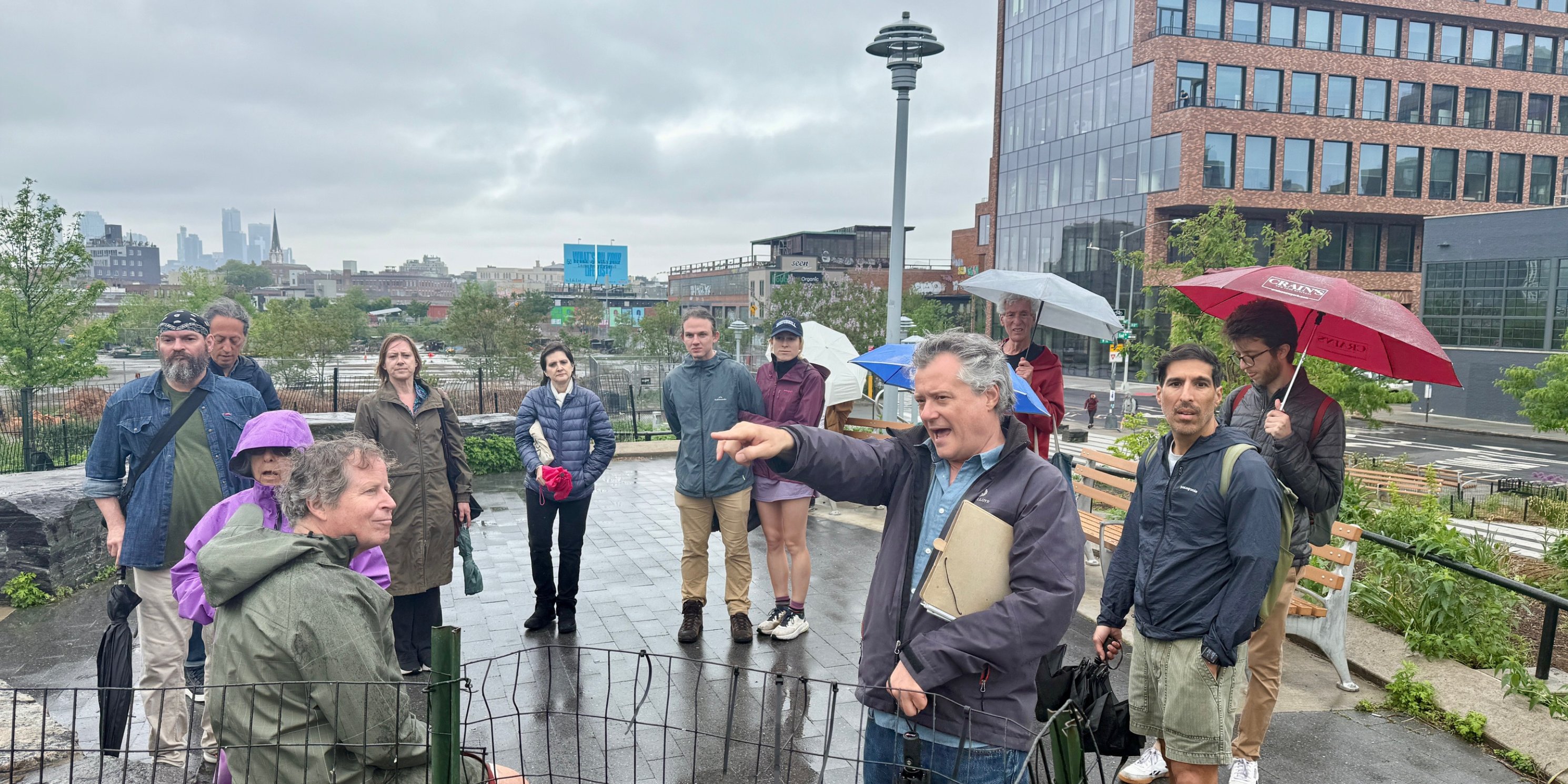President’s Letter: June 2025
Monthly observations and insights from MAS Interim President Keri Butler
During last month’s Jane’s Walk NYC weekend, I joined a tour of the Greenpoint-Brooklyn waterfront led by MAS Preservation Committee member Ward Dennis. This experience underscored many important lessons from the 2005 rezoning that transformed this area.
Sadly, the streetscapes between some of the new buildings are unwelcoming, dominated by excessive hardscapes and imposing, blank building walls. The inclusion of ground-floor parking garage entries has deactivated street level connections, transforming pathways into private-feeling corridors rather than inviting public walkways to the waterfront. If only the parking mandates had been reconsidered at that time! (It’s worth noting that community members had requested parking waivers but were denied.)
In another striking discovery, City-owned sites that were promised as parkland remain behind schedule, with some—like Box Street Park—still vacant concrete lots. According to WeGovNYC, the Box Street Park project is now nine years late and over budget by $7.7 million. The delay is reportedly due to contamination abatement—a costly process. What happened to the funds the City received from the transfer of development rights from the Box Street Park site to 77 Commercial Street? The City has failed to honor its past commitments yet continues to push forward with rezonings and development plans that may not produce the public open space our communities deserve.

This year, MAS is conducting a study of waterfront neighborhood rezonings to understand how commitments of city-owned land for public benefit have played out and how future efforts can be improved. Our goal is to advocate for the City to use its power and property to produce the most affordable housing possible and public spaces that are green, welcoming, serve diverse constituencies, and are built within a reasonable timeframe.
This effort builds upon MAS’s existing studies, including 2018’s A Tale of Two Rezonings, and maps like Public Assets, and Available Air Rights. MAS will explore available data and tools and advocate for ways to help ensure that with neighborhood rezonings, maximum public benefits are obtained, and community promises are fulfilled.
One existing tool is the Department of City Planning (DCP) NYC Rezoning Commitments Tracker, which was mandated by law in 2016 and lists commitments tied to neighborhood rezonings along with an annual progress report. (See the DCP website here.) However, this requirement does not account for promises made prior to 2016. The City should “backtrack” and include all unfulfilled commitments from earlier rezonings to provide transparency and accountability.
Several ideas have emerged as part of the City Charter Revision Commission hearings. Council Member Pierina Ana Sanchez proposed requiring community agreements to be incorporated immediately into the City’s budget and capital plans. This would be a promising step toward ensuring commitments are funded and planned for.
An increase in the annual budget allocated for community engagement within DCP could go a long way to help foster fairness, trust, and accountability in neighborhood planning processes. This funding could be used to pay for the facilitation of community-based
groups that track progress on Points of Agreement (POAs) like the Gowanus Oversight Task Force, a group of 30 neighborhood volunteers who regularly meet with City agencies to ensure that city commitments under the Gowanus Neighborhood Plan are carried out.
Another vital step would be to establish a revamped version of Mayor de Blasio’s Neighborhood Development Fund—a $1 billion fund managed by the Economic Development Corporation—to support neighborhood projects, infrastructure, and open spaces in rezoned areas. This fund could help ensure that promised investments in public spaces and infrastructure are delivered on time.
These are just a few ideas that deserve a fresh look and further study. It is imperative that our city’s planning and development processes are transparent, accountable, and responsive to the needs and promises of our communities. We look forward to working with policymakers and stakeholders to identify solutions to achieve the full potential of our neighborhoods and waterfronts.
